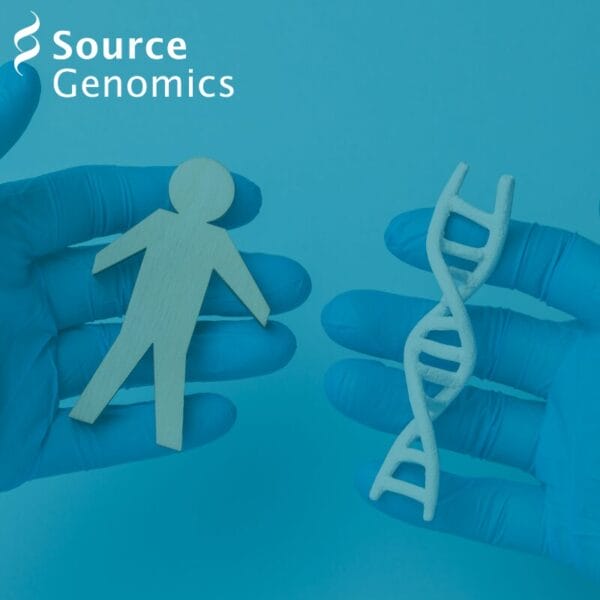Uses of AI in Digital Pathology
Digital pathology, a rapidly evolving field within medicine, integrates advanced technologies to enrich conventional pathology practices — encompassing the capture, organisation, distribution, and analysis of pathology data within a digital realm.
Conventional pathology practices are limited by staff shortages, mounting workloads, difficulties in transporting glass slides for further analysis, and subjectivity of interpretation between pathologists, making accurate and timely analysis of disease-implicated tissue features difficult.
In recent years, the incorporation of artificial intelligence (AI) into the field of digital pathology has enabled the quantitative assessment of tissue samples, beyond the limitations of human perception.
AI employs computers and machinery to simulate the decision-making and problem-solving capabilities of the human mind, whilst also processing large volumes of data with unprecedented speed and accuracy. Consequently, the widespread implementation of AI and digital pathology into standard medical practice has significant potential to overcome the constraints of traditional pathology workflows.
AI in disease pathology: advantages and limitations
The increasing use of AI techniques in pathology has significantly impacted our knowledge of the microenvironment of various diseases, such as tumours. It also allows categorising patients and selecting diagnostic tests to determine treatment plans based on individual patient profiles. The progress in methods within the field of pathology promotes data-driven decision-making with the potential to enhance patient care in this medical domain significantly.
Integrating artificial intelligence in the sample analysis workflow also brings multiple advantages for pathologists. It can be incorporated into all stages of the work: pre-analytic, analytic and post-analytic, and overall enhance the quality control of scanned images and formalin-fixed paraffin-embedded tissue blocks. AI can help determine the priority of the cases, improve the analytical phase through access to the previous results, and optimise repetitive and time-consuming tasks. AI also allows on-demand consulting and cloud servers with easier data access and transfer.
Incorporating AI into disease pathology recognition can help improve the results’ accuracy and obtain consistent results that decrease the risk of human error. The high throughput of the technology allows for a much larger number of tests, reducing the waiting time and speeding up the decision-making time for the best treatment option. And, due to the more advanced detection, it can also enable the earlier phenotype change recognition and crosscheck the results with data from other diagnostic tests.
Current and future use of AI within digital pathology
Even though AI also brings ethical and regulatory concerns regarding data privacy, liability and bias of the algorithms, there are more than 300 AI tools that are approved by the FDA for use in radiology, according to Anant Madabhushi, a professor in the department of biomedical engineering at the Emory University School of Medicine in Atlanta.
Moreover, the Royal College of Pathologists released a statement on digital pathology and artificial intelligence in February 2023, acknowledging that AI can potentially transform the way pathologists work and that the College supports using these technologies to improve healthcare.
However, the statement emphasised that AI will not replace the need for pathologists to be involved in diagnosis. While AI does have the potential to free up time for pathologists, improve laboratory workflow or enhance the accuracy or consistency of diagnosis, pathologists will need to interpret and analyse information to produce an overall pathological assessment.
Digital pathology technology with Source LDPath
Source LDPath, formed in March 2021 when Source BioScience acquired London Digital Pathology, is pioneering the process of helping hospital pathology laboratories move to a digitised model.
Source LDPath offers a unique digital modular integration model to support and enable the adoption of digital pathology and AI into routine practice. It transforms your pathology workflow by scanning patient samples, removing the need for regular microscope work, and physically shipping slides, which are the admin-heavy and time-consuming steps that are more susceptible to human error and risk of slide damage.
Modularity and integration of Source LDPath
The implementation of pathology involves integrating technology, improving workflows, providing training, ensuring quality assurance and making workforce adjustments. Source LDPath offers several integration models, which can be incorporated individually or as a comprehensive system depending on the current consumer infrastructure and individual needs and requirements for streamlined digitisation, efficient workflow, local system interfacing, data storage and administrative support.
The models include:
● Module 1: Tissue processing support
● Module 2: Scanning and AI
● Module 3: Reporting with system integration with Source LDPath’s LIMS
● Module 4: MDM provision, audit work and double reporting
● Module 5: Complete service
Additionally, Source LDPath provides digital reporting with the help of AI, enabling productivity report generation, improved slide management, immediate access, and support and second opinions.
Features of Source LDPath
Source LDPath enables providing in-house pathology by delivering a complete digital pathology solution, including the installation of on-site scanning facilities. The streamlined processes enable more efficient laboratory operation, faster reporting and alleviating workforce pressures around the oncology diagnostic process through automated image analysis.
Our AI and digital pathology technology enhance:
● Accelerating pathology reporting turnaround times
● Reducing patients waiting times
● Improving diagnostic accuracy
● Easing pathologist workload
Summary of the Source LDPath
Value to pathologists:
● Asynchronous collaboration
● Increased bandwidth for complex case reporting
● Increased diagnostic confidence with AI integration
● Increased working flexibility
● Instant access to reports
● Less-stress environment
● Promotes training and advanced skill set
● Reduces time spent retrieving data
Value to pathology department:
● Automated case audits
● Bespoke LIMS for seamless integration
● Caseload balancing
● Cost savings per case
● Digital second opinions and MDMs
● Expand capacity and workforce
● Reduced transport costs
● Reduces backlogs
● Standardised reports
● Tailored SNOMED and cancer registry
Get in touch with Source LDPath today
Source LDPath is the largest, most technically advanced private provider of cellular and digital pathology services in the UK. Our expertise lies in digitising pathology labs and incorporating AI into diagnosis and reporting, aiming to revolutionise diagnostic processes and enhance patient care.
Contact us today to find out more.
Contact us today and one of our skilled account managers will be in touch with a free consultation including further information and pricing details.
Share this article

